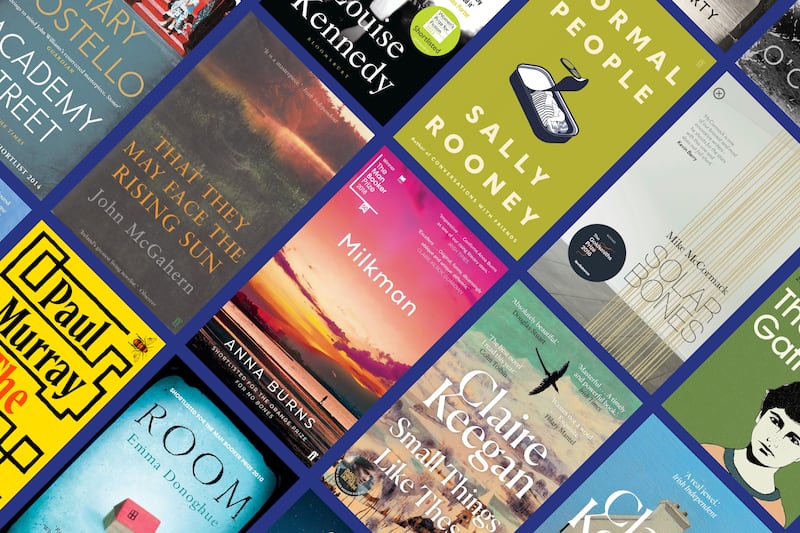
Are tennis players still haunted by significant defeats years after they have retired? The question is answered in the affirmative here by Conor Niland, who admits that he thinks about his first-round, five-set loss to Adrian Mannarino at Wimbledon in 2011 almost every day. The memory just pops into his head, “intruding at random times”. He had been up a break of serve in the final set. He would have played Roger Federer on Centre Court next.
These are just some of the “what ifs” that surface in The Racket, an honest and droll memoir from the top-ranked Irish male player of the Open Era to have spent his career “reliant on Tennis Ireland”. Produced with the aid of sports journalist Gavin Cooney, the book is well-served by its subtitle. Sporting history is so often written by champions steeped in survivorship bias. Here, they are relegated to illuminating cameos.
Federer, the immortal who Niland recalls beating as a youth player, appears “less playful behind the scenes”, cheerfully announcing himself to a Doha locker room with a “swagger” as intimidating as it is charming. Andy Murray, who he hits with at the UK’s National Training Centre in Roehampton in London, is “grounded enough to notice a good deal on a bowl of pasta”. A young Grigor Dimitrov, who makes him laugh by doing an impression of his walk, proudly confides “[Maria] Sharapova likes me, man”. (They later dated.)
There’s a deftness of touch to these descriptions, though none is more poignant than the vision of Novak Djokovic — who Niland loses to at the 2011 US Open in his only other Grand Slam main draw appearance — posing “straight-backed and Sphinx-like” at the change-of-ends, reminding him of how his father sat when he read the newspaper at home.
But The Racket is not about the elite. It is about the 99 per cent who vie to overcome the harsh realities of mismanaged potential, transactional friendships, thwarted match preparations, bad timing and worse luck. Niland, pushed to stay in the game by his parents, does not overly dwell on the sacrifices he and they made, but the importance of not disappointing them percolates through each page.
If we can’t ever fully grasp everything that goes into being number one in the world in any given sport, we instinctively understand even less about what it takes to be the player who fights to crack the top 200 and peaks, as he did, at a ranking of 129.
Tennis is a sport of fine margins and a wide disparity of outcomes. Its scoring system has a snakes-and-ladders component as frustrating as it is thrilling; the ranking system seems torturous, too. To climb it, male players typically slug it out on the “obscure outposts” of the ATP Challenger tour, the rung just below the main ATP men’s tennis tour. But to access the Challenger events they must first string together ranking points from an even lower tier of tournaments. This isn’t glamorous. At times, it is pay-to-play.
The Racket reaches bookshops just as a well-researched Hollywood film, Challengers, refreshingly depicts this very subject, luring in cinemagoers with the promise of a Zendaya-led throuple. Niland’s account, however, will leave readers in no doubt: there is nothing sexy about slipping on the damp clay of Banja Luka, Bosnia, then hobbling to your chair with a hip injury. Goodbye ladder, hello snake.
The logistics of professional tennis are absurd the world over, but Niland’s references to the not especially accommodating Tennis Ireland and the Olympic Council of Ireland — which declined to send his role-model older sister Gina and her doubles partner to the 1992 Games after they secured a place — may sink Irish fans into a state of Andrey Rublev-style rage (or McEnroe-esque fury, if you prefer).
This is just one of the sliding doors of his story. Born in Birmingham before his family returned to Limerick when he was two, Niland could have enjoyed multiple Wimbledon wild cards if he had represented the UK — instead, he makes it to SW19 the hard way. Even allowing for population size, Ireland underachieves in tennis, he says, smashing home the point.
Such is the brutality of this lonely, nomadic life that when the end comes, hastened by his need for hip surgery, the relief is visceral. It’s impossible not to agree with him when he writes that he doesn’t think it’s a contradiction to say he didn’t fulfil his potential but couldn’t have tried any harder. For most people, this is a far more relatable life experience than that of the top dogs who glide into the record books declaring dreams do come true.














